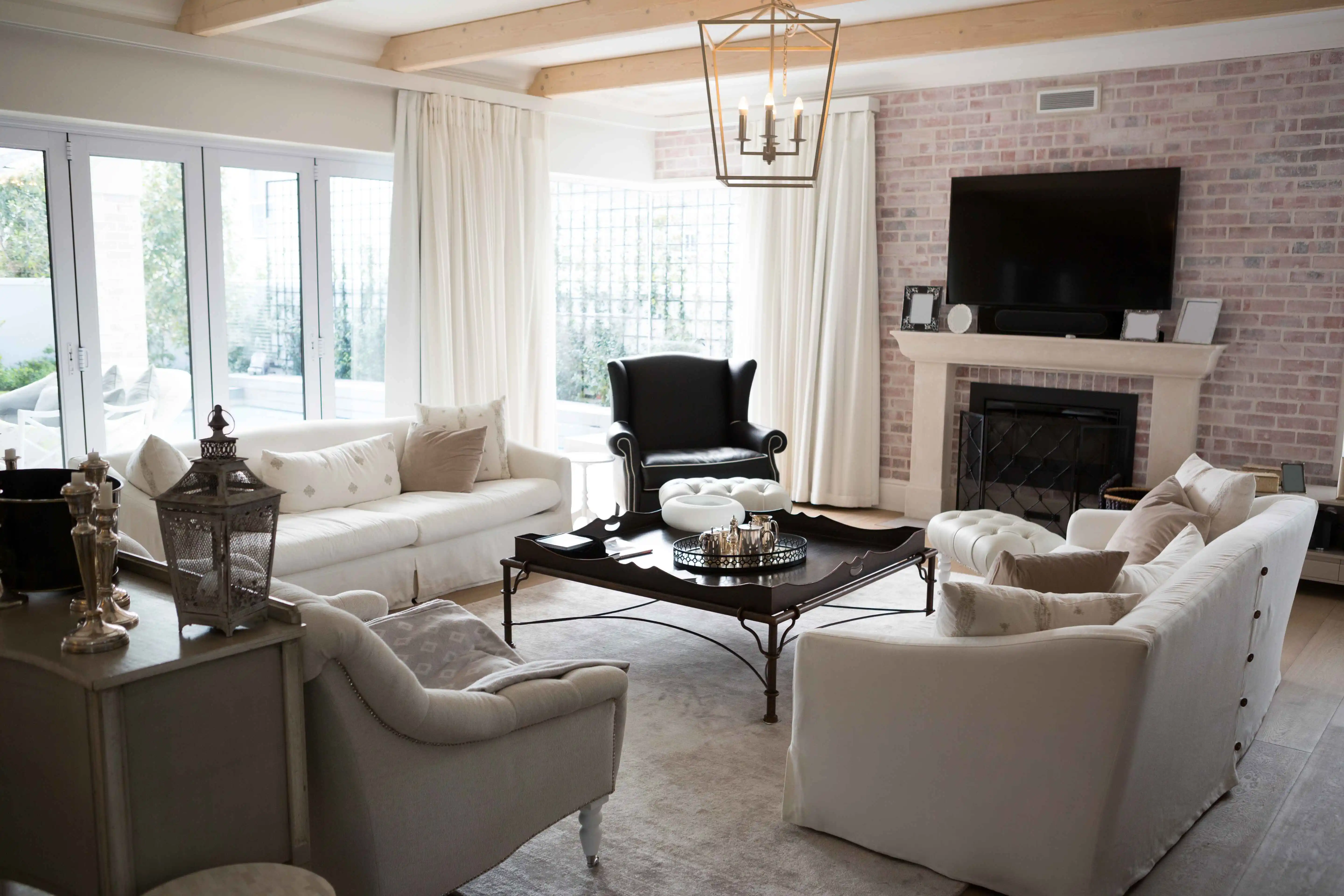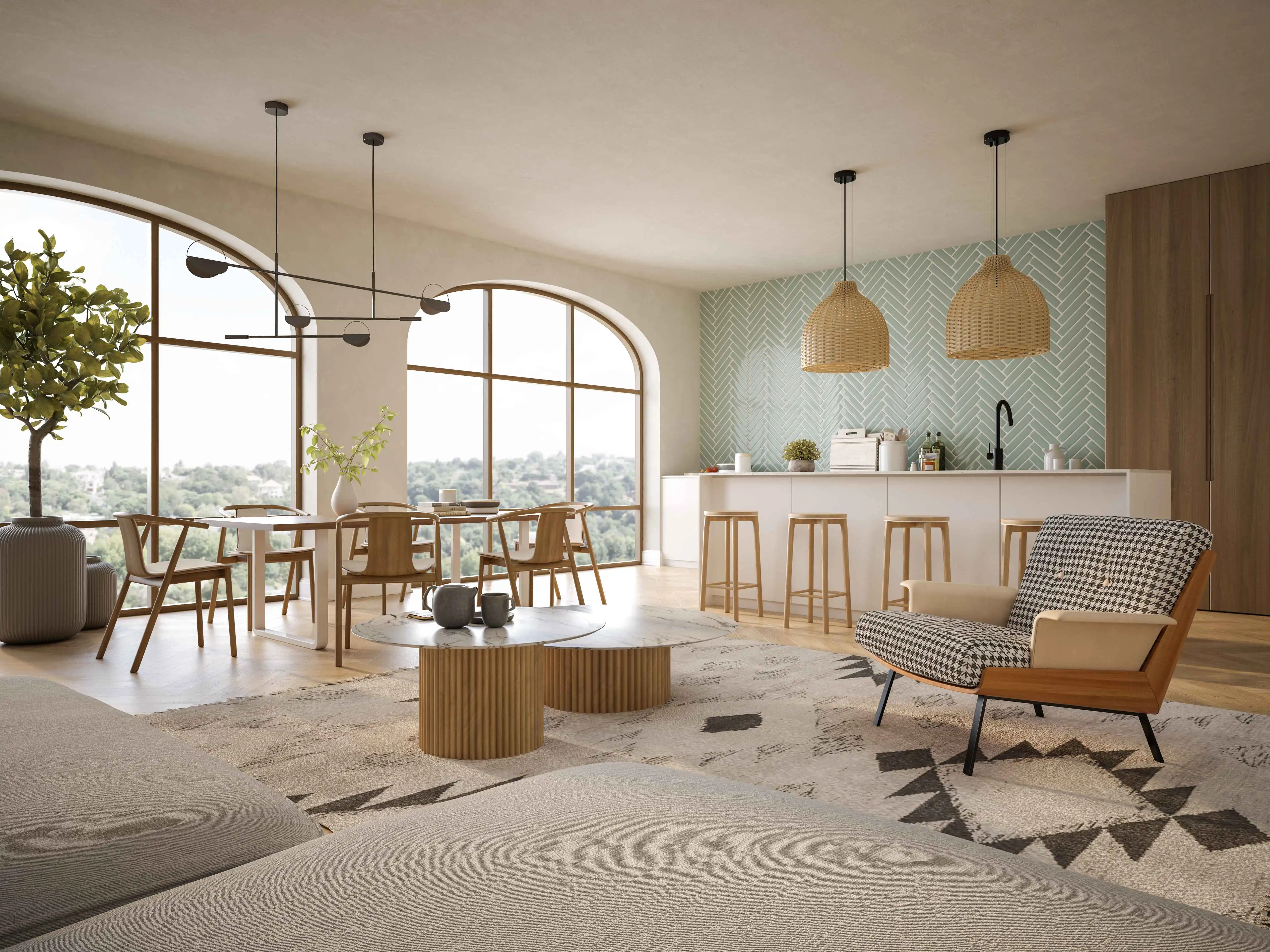Residential Interior Design a Guide to Planning Spaces with Styly
Residential Interior Design a Guide to Planning Spaces with Styly
14 août 2024
Designing a residential space that feels both functional and aesthetically pleasing can be a challenging task. Whether you're rearranging a living room, redesigning a bedroom, or planning a new kitchen, the process requires careful consideration of space, style, and utility. But what if you could simplify this process with the help of AI?
In this guide, we’ll explore the fundamentals of residential interior design and how you can use Styly’s AI-powered tools to plan and visualize your space effortlessly. With our AI room planner and AI interior design free tools, you can create stunning, personalized designs without needing extensive experience or a large budget.
The Basics of Residential Interior Design
Before diving into the technicalities, it's essential to understand the basic principles of interior design. These principles will guide you in making decisions that affect the flow, function, and feel of your space.
1. Space Planning
Space planning is the foundation of any interior design project. It involves arranging furniture and decor in a way that optimizes the use of space while ensuring comfort and accessibility. Consider factors like:
Room Functionality: What is the primary use of the room? For example, a living room might need to accommodate seating for guests, while a home office requires space for a desk and storage.
Traffic Flow: Ensure there's enough space for movement around the room without obstruction. Paths should be clear, and furniture placement should facilitate easy navigation.
Balance and Proportion: Distribute furniture and decor evenly to create a balanced look. Avoid overcrowding the space with too many large pieces.
2. Choosing a Color Scheme
Colors can significantly impact the mood and perception of a room. Consider the purpose of the space when choosing a color palette. For instance, calm, neutral tones work well in bedrooms, while vibrant colors might be better suited for a playroom or creative space.
3. Lighting
Lighting is a crucial element in interior design. It sets the ambiance and highlights specific areas of a room. Combine different types of lighting—ambient, task, and accent—to create a well-lit and inviting environment.
4. Furniture Selection
Selecting the right furniture is about more than just style. You need to consider the scale, comfort, and function of each piece. Choose furniture that complements the room's dimensions and enhances its usability.
5. Personal Touches
Incorporating personal elements like artwork, family photos, or souvenirs adds character to your space. These details make the room uniquely yours and tell a story about who you are.
Designing a residential space that feels both functional and aesthetically pleasing can be a challenging task. Whether you're rearranging a living room, redesigning a bedroom, or planning a new kitchen, the process requires careful consideration of space, style, and utility. But what if you could simplify this process with the help of AI?
In this guide, we’ll explore the fundamentals of residential interior design and how you can use Styly’s AI-powered tools to plan and visualize your space effortlessly. With our AI room planner and AI interior design free tools, you can create stunning, personalized designs without needing extensive experience or a large budget.
The Basics of Residential Interior Design
Before diving into the technicalities, it's essential to understand the basic principles of interior design. These principles will guide you in making decisions that affect the flow, function, and feel of your space.
1. Space Planning
Space planning is the foundation of any interior design project. It involves arranging furniture and decor in a way that optimizes the use of space while ensuring comfort and accessibility. Consider factors like:
Room Functionality: What is the primary use of the room? For example, a living room might need to accommodate seating for guests, while a home office requires space for a desk and storage.
Traffic Flow: Ensure there's enough space for movement around the room without obstruction. Paths should be clear, and furniture placement should facilitate easy navigation.
Balance and Proportion: Distribute furniture and decor evenly to create a balanced look. Avoid overcrowding the space with too many large pieces.
2. Choosing a Color Scheme
Colors can significantly impact the mood and perception of a room. Consider the purpose of the space when choosing a color palette. For instance, calm, neutral tones work well in bedrooms, while vibrant colors might be better suited for a playroom or creative space.
3. Lighting
Lighting is a crucial element in interior design. It sets the ambiance and highlights specific areas of a room. Combine different types of lighting—ambient, task, and accent—to create a well-lit and inviting environment.
4. Furniture Selection
Selecting the right furniture is about more than just style. You need to consider the scale, comfort, and function of each piece. Choose furniture that complements the room's dimensions and enhances its usability.
5. Personal Touches
Incorporating personal elements like artwork, family photos, or souvenirs adds character to your space. These details make the room uniquely yours and tell a story about who you are.
Designing a residential space that feels both functional and aesthetically pleasing can be a challenging task. Whether you're rearranging a living room, redesigning a bedroom, or planning a new kitchen, the process requires careful consideration of space, style, and utility. But what if you could simplify this process with the help of AI?
In this guide, we’ll explore the fundamentals of residential interior design and how you can use Styly’s AI-powered tools to plan and visualize your space effortlessly. With our AI room planner and AI interior design free tools, you can create stunning, personalized designs without needing extensive experience or a large budget.
The Basics of Residential Interior Design
Before diving into the technicalities, it's essential to understand the basic principles of interior design. These principles will guide you in making decisions that affect the flow, function, and feel of your space.
1. Space Planning
Space planning is the foundation of any interior design project. It involves arranging furniture and decor in a way that optimizes the use of space while ensuring comfort and accessibility. Consider factors like:
Room Functionality: What is the primary use of the room? For example, a living room might need to accommodate seating for guests, while a home office requires space for a desk and storage.
Traffic Flow: Ensure there's enough space for movement around the room without obstruction. Paths should be clear, and furniture placement should facilitate easy navigation.
Balance and Proportion: Distribute furniture and decor evenly to create a balanced look. Avoid overcrowding the space with too many large pieces.
2. Choosing a Color Scheme
Colors can significantly impact the mood and perception of a room. Consider the purpose of the space when choosing a color palette. For instance, calm, neutral tones work well in bedrooms, while vibrant colors might be better suited for a playroom or creative space.
3. Lighting
Lighting is a crucial element in interior design. It sets the ambiance and highlights specific areas of a room. Combine different types of lighting—ambient, task, and accent—to create a well-lit and inviting environment.
4. Furniture Selection
Selecting the right furniture is about more than just style. You need to consider the scale, comfort, and function of each piece. Choose furniture that complements the room's dimensions and enhances its usability.
5. Personal Touches
Incorporating personal elements like artwork, family photos, or souvenirs adds character to your space. These details make the room uniquely yours and tell a story about who you are.
Designing a residential space that feels both functional and aesthetically pleasing can be a challenging task. Whether you're rearranging a living room, redesigning a bedroom, or planning a new kitchen, the process requires careful consideration of space, style, and utility. But what if you could simplify this process with the help of AI?
In this guide, we’ll explore the fundamentals of residential interior design and how you can use Styly’s AI-powered tools to plan and visualize your space effortlessly. With our AI room planner and AI interior design free tools, you can create stunning, personalized designs without needing extensive experience or a large budget.
The Basics of Residential Interior Design
Before diving into the technicalities, it's essential to understand the basic principles of interior design. These principles will guide you in making decisions that affect the flow, function, and feel of your space.
1. Space Planning
Space planning is the foundation of any interior design project. It involves arranging furniture and decor in a way that optimizes the use of space while ensuring comfort and accessibility. Consider factors like:
Room Functionality: What is the primary use of the room? For example, a living room might need to accommodate seating for guests, while a home office requires space for a desk and storage.
Traffic Flow: Ensure there's enough space for movement around the room without obstruction. Paths should be clear, and furniture placement should facilitate easy navigation.
Balance and Proportion: Distribute furniture and decor evenly to create a balanced look. Avoid overcrowding the space with too many large pieces.
2. Choosing a Color Scheme
Colors can significantly impact the mood and perception of a room. Consider the purpose of the space when choosing a color palette. For instance, calm, neutral tones work well in bedrooms, while vibrant colors might be better suited for a playroom or creative space.
3. Lighting
Lighting is a crucial element in interior design. It sets the ambiance and highlights specific areas of a room. Combine different types of lighting—ambient, task, and accent—to create a well-lit and inviting environment.
4. Furniture Selection
Selecting the right furniture is about more than just style. You need to consider the scale, comfort, and function of each piece. Choose furniture that complements the room's dimensions and enhances its usability.
5. Personal Touches
Incorporating personal elements like artwork, family photos, or souvenirs adds character to your space. These details make the room uniquely yours and tell a story about who you are.
How AI Can Transform Your Interior Design Experience
Traditional interior design methods can be time-consuming and often require professional expertise. However, with advancements in AI, anyone can become a skilled designer with the right tools at their fingertips. Here’s how Styly’s AI room planner and AI interior design free tools can help:
1. AI-Powered Room Planning
Our AI room planner allows you to visualize your space in 3D, making it easier to experiment with different layouts and configurations. Simply input your room’s dimensions, and the AI will generate multiple design options that optimize space and functionality.
2. Automated Design Suggestions
Not sure where to start with your design? Styly’s free AI room design tool analyzes your space and suggests furniture arrangements, color schemes, and decor ideas based on your preferences and the room’s function. This feature takes the guesswork out of the design process, allowing you to create beautiful spaces with minimal effort.
3. Customization and Flexibility
While our AI tools provide automated suggestions, you’re always in control. You can customize every aspect of your design, from the placement of furniture to the choice of colors and materials. This flexibility ensures that your space reflects your personal style and meets your specific needs.
4. Budget-Friendly Solutions
Hiring a professional interior designer can be expensive, but with Styly’s AI interior design free tools, you can achieve professional results without the cost. Our platform offers a range of free design options, making it accessible to everyone, regardless of budget.
How AI Can Transform Your Interior Design Experience
Traditional interior design methods can be time-consuming and often require professional expertise. However, with advancements in AI, anyone can become a skilled designer with the right tools at their fingertips. Here’s how Styly’s AI room planner and AI interior design free tools can help:
1. AI-Powered Room Planning
Our AI room planner allows you to visualize your space in 3D, making it easier to experiment with different layouts and configurations. Simply input your room’s dimensions, and the AI will generate multiple design options that optimize space and functionality.
2. Automated Design Suggestions
Not sure where to start with your design? Styly’s free AI room design tool analyzes your space and suggests furniture arrangements, color schemes, and decor ideas based on your preferences and the room’s function. This feature takes the guesswork out of the design process, allowing you to create beautiful spaces with minimal effort.
3. Customization and Flexibility
While our AI tools provide automated suggestions, you’re always in control. You can customize every aspect of your design, from the placement of furniture to the choice of colors and materials. This flexibility ensures that your space reflects your personal style and meets your specific needs.
4. Budget-Friendly Solutions
Hiring a professional interior designer can be expensive, but with Styly’s AI interior design free tools, you can achieve professional results without the cost. Our platform offers a range of free design options, making it accessible to everyone, regardless of budget.
How AI Can Transform Your Interior Design Experience
Traditional interior design methods can be time-consuming and often require professional expertise. However, with advancements in AI, anyone can become a skilled designer with the right tools at their fingertips. Here’s how Styly’s AI room planner and AI interior design free tools can help:
1. AI-Powered Room Planning
Our AI room planner allows you to visualize your space in 3D, making it easier to experiment with different layouts and configurations. Simply input your room’s dimensions, and the AI will generate multiple design options that optimize space and functionality.
2. Automated Design Suggestions
Not sure where to start with your design? Styly’s free AI room design tool analyzes your space and suggests furniture arrangements, color schemes, and decor ideas based on your preferences and the room’s function. This feature takes the guesswork out of the design process, allowing you to create beautiful spaces with minimal effort.
3. Customization and Flexibility
While our AI tools provide automated suggestions, you’re always in control. You can customize every aspect of your design, from the placement of furniture to the choice of colors and materials. This flexibility ensures that your space reflects your personal style and meets your specific needs.
4. Budget-Friendly Solutions
Hiring a professional interior designer can be expensive, but with Styly’s AI interior design free tools, you can achieve professional results without the cost. Our platform offers a range of free design options, making it accessible to everyone, regardless of budget.




Wanna Unlock more insights? following us on social media:
Start Planning Your Dream Space with Styly
Designing your home should be an enjoyable and creative experience. With Styly’s AI-powered tools, you can take the stress out of space planning and focus on bringing your vision to life. Whether you’re redesigning a single room or planning an entire home makeover, our room design AI solutions will help you create stunning, functional spaces that you'll love.
Ready to get started? Try Styly’s free AI room design tools today and discover how easy it is to plan and design your perfect space!
Wanna Unlock more insights? following us on social media:
Start Planning Your Dream Space with Styly
Designing your home should be an enjoyable and creative experience. With Styly’s AI-powered tools, you can take the stress out of space planning and focus on bringing your vision to life. Whether you’re redesigning a single room or planning an entire home makeover, our room design AI solutions will help you create stunning, functional spaces that you'll love.
Ready to get started? Try Styly’s free AI room design tools today and discover how easy it is to plan and design your perfect space!



